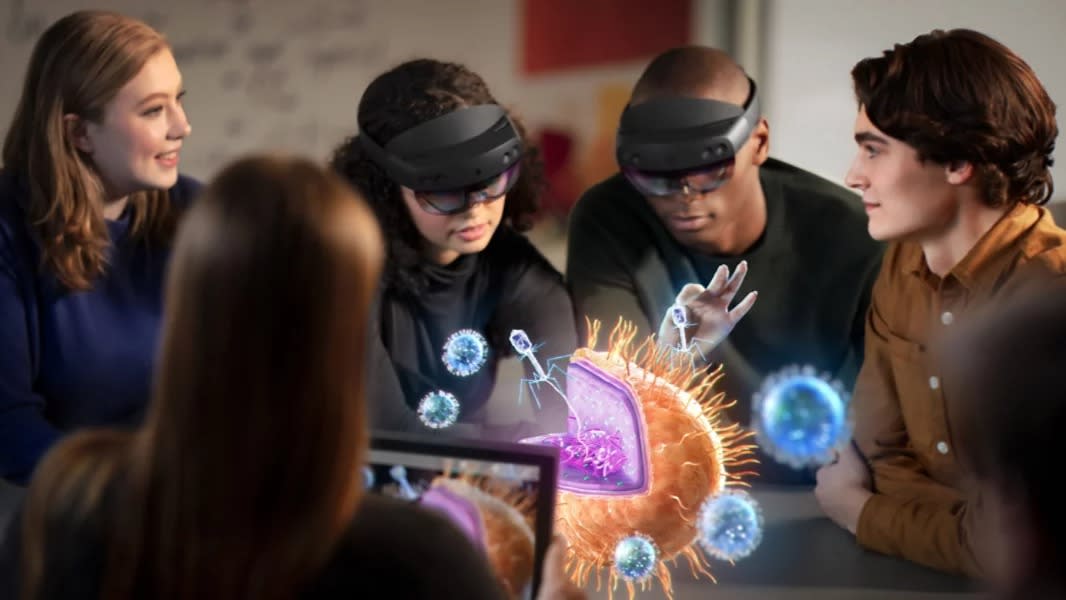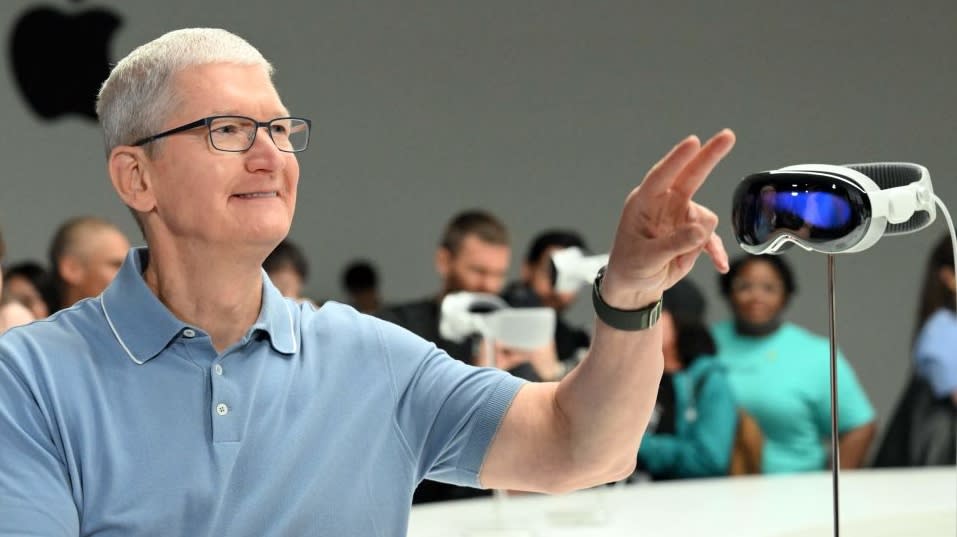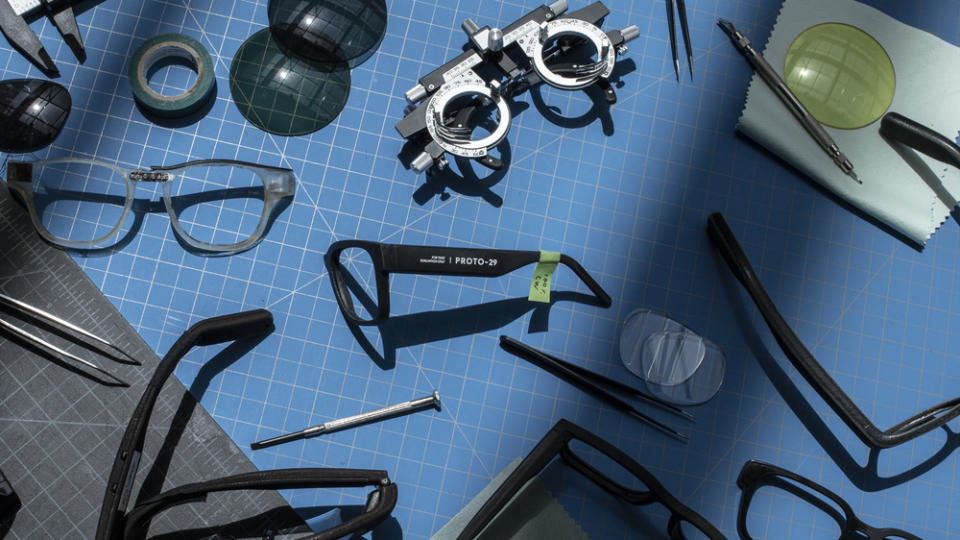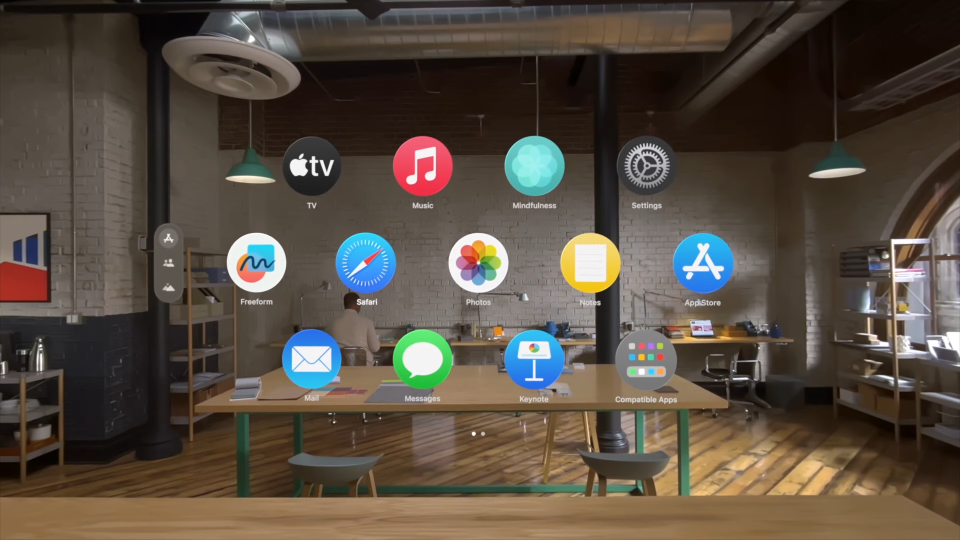When Microsoft ruled reality: Spatial computing before the Apple Vision Pro

Once, a giant technology company released a headset that could magically project and manipulate realistic digital objects in midair. It could be used for a host of business applications, such as visualizing models and data, remote teaching and support of engine repairs, and even pre-visualizing surgeries. It cost more than $3,000. But, no, it didn’t look like a pair of goggles.
The company was Microsoft and the headset was the HoloLens, a mold-breaking effort for Microsoft the same way the Apple Vision Pro modified the Apple playbook. Unlike the Apple Vision Pro, which had been rumored for years, foreshadowed by Apple’s ARKit on iPhones, and hinted at by Tim Cook waxing enthusiastic about augmented reality’s potential, the HoloLens came out of nowhere. Microsoft’s work on Kinect provided only the faintest indication that the company behind Windows was ready to give us a taste of what could be computing’s future.

Lost in spatial computing
Despite all the progress being made in virtual reality, in-person teamwork places a heavy emphasis on interaction with each other as well as digital objects. Alas, the HoloLens’ limited field of view, which Microsoft improved in its successor, was one of its main limitations; objects would simply be cut off if they expanded too far to the left or the right. But there was still nothing that could approach it for years.
One of the signature features of the Apple Vision Pro is that it can adjust surroundings from complete visibility to complete darkness. That, actually, is an apt description of the limbo where HoloLens has spent the past few years. Far from canceling the pioneering headset, Microsoft continues to market and sell it. Got $3,500 you’re determined to spend on a spatial computing device that doesn’t come from Apple? Step right this way!
But while the Apple Vision Pro’s purchase process may be more time-consuming than that of, say, an Apple Watch, Apple has already highlighted more mainstream uses for its applications--including running the huge library of iOS apps, than Microsoft ever did. (The HoloLens can run certain kinds of Windows apps.)
Alas, there’s been no new HoloLens hardware released since 2019. Had Microsoft continued aggressively developing, and far more aggressively distributing, the HoloLens, it might be around where Apple is now with the Apple Vision Pro. But as Google Glass showed us, a device can linger in vertical applications for many years before it finally fades from view.

Back to reality
Microsoft shifted its focus away from mixed reality long before the Apple Vision Pro rumors kicked into high gear. And from the start, it stepped cautiously into a new device category after such expensive experiments as Xbox (now barely profitable after decades of losses), Zune, and Lumia phones.
As even these products had prices thousands of dollars less than HoloLens, Microsoft never had ambitions of scaling production. Microsoft was always transparent that it was pursuing HoloLens to drive opportunities for higher-margin Azure applications and services. Even bringing Minecraft to the platform served to promote Azure location services. (It obviously was not an attempt to drive adoption by 8-year-olds.)
Here’s a point for Microsoft. Like the Meta Quest and unlike the Apple Vision Pro, HoloLens was completely self-contained while AVP requires an external battery. However, in addition to the adjustable immersion, Apple Vision Pro’s higher resolution and greater field of view make its visualizations more realistic. You can get closer to them and it’s easier to read text. And because it doesn't need a controller, it's not only more natural and convenient to use, but you can use your hands for other things while using Apple’s headset. And while HoloLens’ Star Trek prop vibe wasn't such a big deal in an industrial setting (Indeed, Trimble developed a construction hard hat modification for it), but AVP's more subdued colors and design are more palatable to designers working in spatial computing.

Microsoft's future in spatial computing
While the HoloLens device may not live on, Microsoft has no shortage of platforms on which to develop spatial computing apps and from which to draw data for cloud processing. The company has already brought its productivity applications to the Apple Vision Pro and Meta Quest. It is of course a close partner with Lenovo, which has produced several headsets and supports third-party devices to sell more powerful servers and services.
And while Google has been one of its greatest rivals, Samsung and Qualcomm—the other partners in the Android world’s response to the Apple Vision Pro—are also partners. What all these and other platforms have in common is an insatiable need for content, something Microsoft surely sees as an opportunity for its investments in generative AI.

